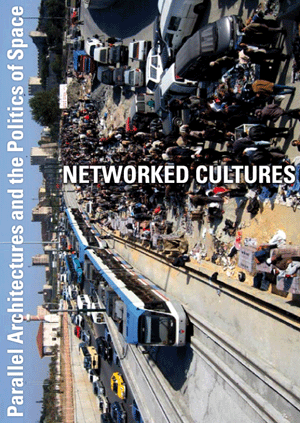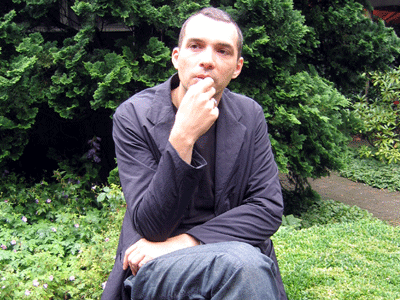_loginregistrieren_database_5 Factories - Worker Control in Venezuela Dario Azzellini & Oliver Ressler _ALMOSTREAL ECF _AnArchitektur Jesko Fezer _Arizona Road Azra Aksamija _Balkan Konsulat rotor _Bata-ville: We are not afraid of the future Nina Pope + Karen Guthrie / www.somewhere.org.uk _Black Benz Race krcf in collaboration with Felix Stalder, Arben Gecaj, Faton Topalli and Osman Osmani _Black Sea Files Ursula Biemann _Camp La Jolla Military ParkOwen Mundy _CHANGE REALITY: Renaming the Streets of Zagreb REINIGUNGSGESELLSCHAFT _Conceptual Paradise. There is a place for sophistication Stefan Roemer _de-regulation Irit Rogoff, Kutlug Ataman, Stefan Roemer_news ____________Bloomberg SPACE, London ____________Kumu Art Museum Tallinn ____________Open Space, Open Systems - Vienna ____________CAA 2011 Conference, New York ____________Forum Stadtpark, Graz ____________Symposium, Istanbul ____________lungomare, Bozen/Bolzano ____________Metropolis Biennale 2007-17, Copenhagen ____________new publication available now ____________Mestna Galerija, Ljubljana ____________Livestream of Networked Cultures documentary ____________ |
_ConversationsIgor DobricicECF
Igor Dobricic
PM/HM: You’re coordinator of the ALMOSTREAL project at the European Cultural Foundation (ECF) in Amsterdam. What are the main goals of this networking project and how do they relate to the ECF’s mission more generally? Igor Dobricic: The ECF is a cultural foundation, which means we’re not an art foundation and we’re not funding “art for art’s sake”. So we’ve a certain social and cultural agenda for funding art, and this involves searching for a special kind of art that has social relevance. But we have noticed that funding policies often create a particular kind of art instead of discovering it. Foundations invest in what they consider “engaged art” and by doing so make this art possible. Especially in eastern Europe a lot has happened that has made artists change how they work in order to get funding – this is an entirely unsatisfactory development. As a funding body, one shouldn’t create an art scene through the way one invests money, but rather figure out how to identify aspects that are especially socially relevant in existing art practices. Funds should not be allocated to particular kinds of practices, but to practices individually selected for their specific characteristics. ALMOSTREAL marks an honest attempt – however clumsy it might seem – to move away from instrumentalising the arts via funding policies and towards funding those projects in art whose relevance isn’t dependent on their sources of financial support. What’s more, the results of funding often aren’t sustainable in the long run. Let’s say you’re funding a certain activity and you’re doing this somewhere in Europe where less resources are available. Well, the moment you pull out, this activity breaks down, because there’s nobody to take over. So our major strategy with respect to this problem is to stimulate alliances, collaborations and partnerships, and the creation of a specific network – or a number of overlapping networks. These networks develop between artists and practitioners, who are supported by us so they can create platforms. The assumption is that this kind of networking with its exchange of information and flow of resources will sustain each individual organisation better. This has been an important point in informing the structure of ALMOSTREAL. Another important aspect of the project is that when we coordinate and fund we try to use the same tools as the artists themselves are using. In other words, we actually want to do what we preach. In this project we try to operate and interact with our partners by looking at how they – artists or art collectives or art initiatives – operate. This also means we create a structure that is unusual for various reasons. This structure is evolving and continuously changing – to a dangerous point of radical fuzziness – through the input of people who have become our partners. So we create a certain network with a number of interesting organisations, individuals and artists, and then we encourage them to recreate it with their input and critical thinking, and this makes it change and evolve accordingly. PM/HM: In your writings you introduce intercultural competence – rather than the rhetoric of intercultural dialogue – as a more meaningful concept for facilitating an understanding of difference. How can intercultural competence be promoted through a funding body like the ECF? Igor Dobricic: Competence implies making an effort to learn, which is why it’s more appealing than the notion of dialogue, which is easily taken for granted as some kind of inborn God-given ability. I think notions of learning/education/social emancipation are crucial for a different approach toward problems of difference. By calling it competence we also force ourselves to clearly identify exactly how we’re failing today to “teach and transmit this competence”. I was at a conference recently on intercultural communication – yet another such term – in Genoa, Italy: a highly academic event in a port city full of immigrants. You had these twenty people sitting in Genoa’s City Hall, this beautiful Renaissance room, discussing the issue of intercultural communication – all very high level, very intelligent, very insightful. Yet none of this informs any kind of practice. When you step out of City Hall onto the street, you’re confronted by the reality of Genoa, full of African immigrants, which was why the conference was organised in the first place. For the most part, these two worlds remain separate. And the radicalism of this separation and the shear shock of moving between these two worlds – that exist in the same cityscape and don’t communicate at all – are quite disturbing. So to trigger an understanding and exchange of differences, rather than regretting the lack of shared identities, we truly need to address the reality of parallelism and separation. The first thing involved is a competent engagement with difference; and the second, the hope that art will be able to provide a place where this encounter can be explored in a very complex and sophisticated – as well as accessible and experiential – form. Though this doesn’t necessarily have to be done on a grand scale, but with honesty and without fear of misunderstandings and confrontations. For currently the exploration of difference in cultural and social practice is not really happening on a serious level due to fear. To give an example of the precious experiences that small organisations can have in the context of an alternative/independent cultural scene, I would like to mention the Balkan region where those who are dealing or operating in the proximity of the “new” alternative media scene are communicating the most efficiently across national boundaries in the arts at the moment. They’ve developed and perfected certain skills and strategies that are quite fascinating in the context of Balkan fragmentation. I don’t see any other artistic discipline or group doing the same. So for us and ALMOSTREAL, it has been really interesting to focus on a few key organisations – kuda.org and PRELOM in Serbia, WHW in Croatia, pro.ba in Bosnia – and try to develop a series of activities with them that we would want to support. ALMOSTREAL works from the premise or belief that the power of art stems from the fact that by nature artistic activity deals with difference in, what I might call, a fundamental, existential way, i.e. individual difference is seen as a personal given, as a structure of consciousness. I think anybody who aims at programmatically exposing or accommodating the differences in other individuals without referring to his or her own internal processes of differentiation and alienation is doing something other than art. As an artist you somehow know that it’s impossible to carry out a social or political mission without making and understanding it as a personal, internalised issue. If the mission to “change the world” is completely externalised, the artist can no longer practice art; he or she is doing something else and immediately becomes implicated as merely another player in the social game of power. And from game theory we know: it’s very hard to change the rules of a game if you’re fully implicated in it. Since we live in a liberal capitalist context, we all experience this difficulty quite personally. This reference to the otherness in us is like a side exit from the maze, a place where the social game dissolves into the process of personal transformation. And this is where I see the role of artistic production: in exercising and exploring strategies of change that in many different ways go beyond self-expression (identity), but always proceed from self-examination (difference).
|
_broadcasts_conversations+ Ana Dzokic and Marc Neelen+ Ayreen Anastas and Rene Gabri + atelier d'architecture autogérée (aaa) + Asya Filippova + Sophie Hope and Sarah Carrington + Branca Curcic + Christoph Schaefer + Campement Urbain + Claudia Zanfi + Despoina Sevasti and Poka-Yio + Erden Kosova + Helmut Batista _textsRadio as Spatial Practiceby: Paulo Tavares Survival Kits: Artistic Responses to Globalizationby: Marga van Mechelen What Ever Happened to Cultural Democracy?by: Sophie Hope I don't know how to explain ...by: Anca Gyemant Trading Placesby: Peter Moertenboeck & Helge Mooshammer Milosevic as Architectby: Srdjan Jovanovic Weiss When the Unavoidable Knocks at the Door ...by: Gulsen Bal Tracing Translocality: The BlackBenz Raceby: Felix Stalder travelling lexicon towards a global positioning systemby: Celine Condorelli |
